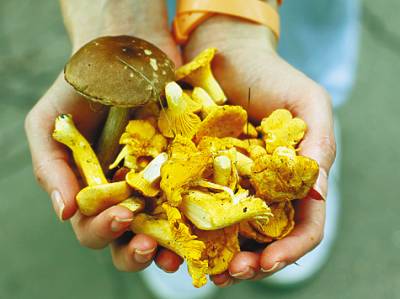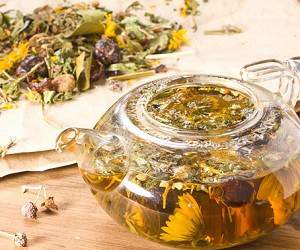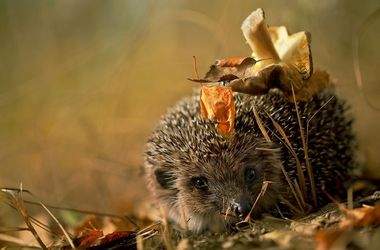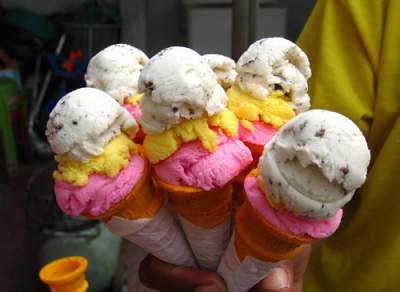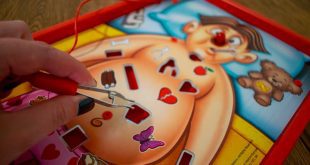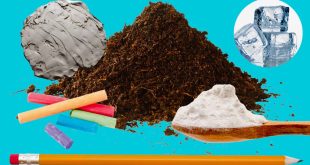 In autumn, frequent poisoning of food.
In autumn, frequent poisoning of food.
The most common diseases in the warm season, including early in the autumn, are of food poisoning that occur due to the consumption of food or drink contaminated by pathogenic microorganisms – viruses, bacteria and parasites.
Products typically cause food poisoning are eggs and products containing them (mayonnaise, cream, etc.), milk and dairy products (cream, cream cheese, sour cream, cheese, etc.), meat and meat products, fish, mushrooms. An important role in food contamination play listen and infection (flies, cockroaches, rodents, etc.) that may carry microorganisms over long distances.
Food poisoning can cause toxins such as microbial and nemikrobnoy origin, and also a poisonous substance, chemical or natural origin. The first group includes microorganisms that can cause intestinal infection: pathogenic (Salmonella, E. coli, staphylococci, Bacillus of botulism) and opportunistic (Proteus, Klebsiella, Citrobacter, Enterococcus) bacteria.
Unfortunately, even ordinary vegetables and fruits are at risk: many people use fertilizers, pesticides and chemicals in gardens and orchards without observing any rules, and plants accumulate toxic chemicals in the fruit.
Poisoning mushrooms and berries
In the fall of frequent poisoning plants poisonous berries. Extra precautions need to be with children because they are very curious and unknowingly eat a sexy red and black berries (nightshade, wolf berries, crow eyes, Lily, belladonna, etc.). Especially dangerous seeds of black henbane, which resemble poppy seeds. Belladonna berries are not only juicy but also sweet taste which attracts children. The consequences of such a “culinary curiosity” can be scary: the poison plants is rapidly absorbed and causes severe poisoning.
Not less severe and mushroom poisoning. Moreover, it develops at the use of even a very small portion of mushrooms: the one and only cracker, caught in a dish with edible fungi that will cause severe poisoning. The cause of poisoning may even become edible mushrooms: they are good absorbents and can accumulate salts of heavy metals. Therefore it is better to give mushrooms to children at all, at least until 7-10 years of age.
Prevention of food poisoning
Before purchasing (using) inspect food products, pay attention to color, taste, smell, texture, etc. don’t buy food on the street.
Do not buy meat and fish that have not passed sanitary control.
Do not buy milk from the market or from unknown vendors. Bought milk should be immediately boiled.
Do not buy swollen cans or cans are expired. Always check the expiration dates on the packaging when you purchase and before use. All swollen cans must be discarded.
Install rule: all prepared food stored in the fridge more than a day, before use must undergo a thermal treatment (example: the first dish is boiled for a few minutes, the meat is fried, etc.).
Not allowed long-term storage of unfrozen meat and fish; they should be immediately subjected to a heat treatment.
ATTENTION! If you are experiencing symptoms of food poisoning – nausea, vomiting, diarrhea, fever, immediately consult a doctor.
Raw (uncooked) foods are often dangerous. therefore:
You should wash and prepare food, shortly after purchase. During cooking, the microbes are completely destroyed.
Food should be heat-treated well – especially meat – (beef, pork and poultry). The selection of the colorless juice from the piece of meat during cooking suggests adequate heat treatment, while the pink or red color of the juice indicates insufficient heat treatment.
Cooked food:
Food should be eaten immediately after cooking, the germs do not have time to multiply and cause disease. Germs grow quickly in a warm room.
If the food was stored for some time for later consumption, it can be consumed after heating at sufficiently high temperature.
If cooked food needs to be stored for more than 5 hours, it should be kept either hot (above 60 °C) or cold (below 10C).
Products can be keep clean if:
Store food in a clean place, covered her with a towel.
Maintain clean surfaces where food is prepared. Germs breed in dirty places to eat leftover food.
Store food in clean and covered utensils, away from flies, mice, rats, and other animals. The most convenient utensils for such purposes is a sealed container.
Rules for processing of vegetables
On the surface of vegetables are part of the soil contaminated with germs and eggs of intestinal parasites. Therefore, their treatment must be performed carefully and efficiently to remove all the mechanical and biological contamination.
Cucumbers, tomatoes, radishes should be washed in a large bowl with a lot of running water for at least 5 minutes. Then rinse well under running water. Pure are vegetables, which are fully removed soil particles and other mechanical impurities.
For removing soil and sand with green leaves of parsley, celery, dill, green onion placed in a bowl of water, and then thoroughly washed under running water.
Carrots, beets, potatoes, parsley and other root vegetables with soil residues should be soaked for 10-15 minutes in cold water in a large bowl, then wash and opolaskivaetsya well under running water.
Potatoes should be cleaned from the holes (areas of germination and must be removed the green parts that are rich in solanine, which is toxic.
How to avoid mass food poisoning
Sometimes, especially in the warm time of the mass poisoning occur in the celebrations organized at home (weddings, christenings, funerals, birthdays, etc.) with the participation of large groups of people.
To avoid mass food poisoning recommended:
– to attract, if possible, by professional chefs;
– limit the menu perishable food (meat, milk, eggs, fish, etc.), replace them with dishes of vegetables and fruits;
– food should be cooked the day of celebration, and perishable dishes before serving must be heated at a sufficiently high temperature;
– make maximum of crockery and Cutlery is disposable.
ATTENTION! At picnics, organized outdoors, Cutlery and crockery should be clean or disposable. Collect bags, garbage and waste after a picnic. Do not neglect the sanitation, aesthetics and care about others and about nature.
The shelf life of foods
Food and cooked food can be stored in the refrigerator for a certain period of time, from my own experience:
Raw or cooked meat (pieces) – 2 days.
The semi-finished meat – 1 day.
Sausages – 3 days.
Chicken – 2 days.
Grilled fish or semi fish – 2 days.
Dense soups and salads (not tucked in) – 12 hours.
Butter – 10 days.
Sour cream – 72 hours.
Cottage cheese – 36 hours.
Milk is 20 hours.
Cake (with cream -26 hours, with cream – 6 hours – 72 hours.
Eggs – 30 days.

